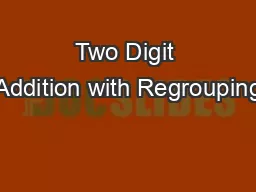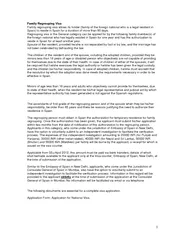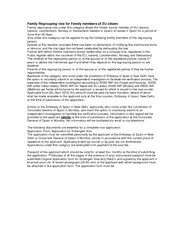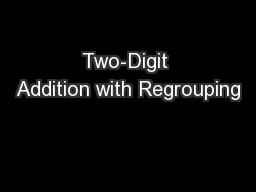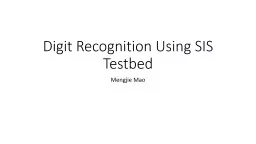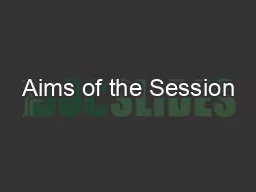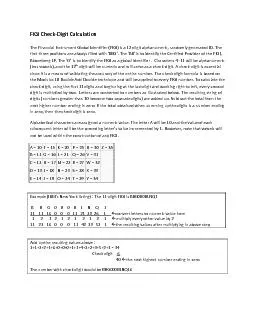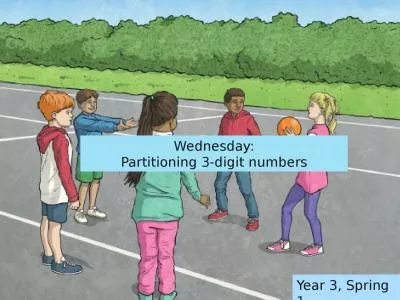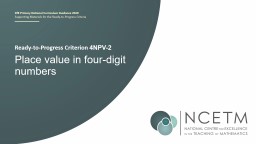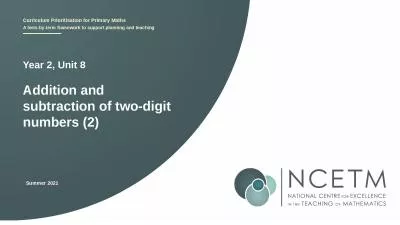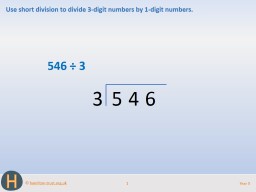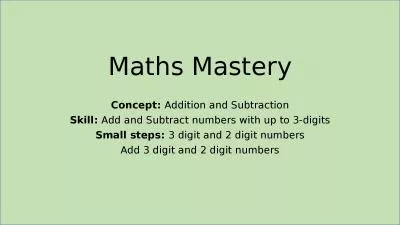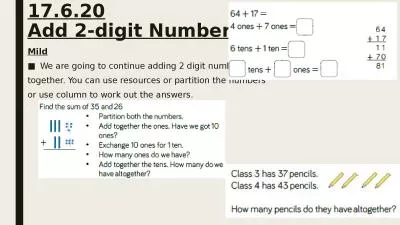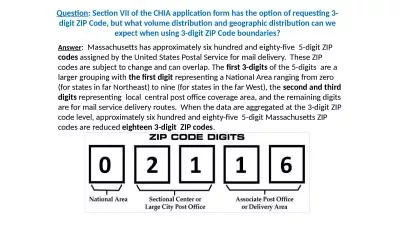PPT-Two Digit Addition with Regrouping
Author : stefany-barnette | Published Date : 2018-02-23
QR Code Answer Check See Saw Office 365 Nearpod Kahoot Celeste Jouanet ITEC 7430 Internet Tools for the Classroom Dr Dias Fall 2016 Lesson Plan Project Project
Presentation Embed Code
Download Presentation
Download Presentation The PPT/PDF document "Two Digit Addition with Regrouping" is the property of its rightful owner. Permission is granted to download and print the materials on this website for personal, non-commercial use only, and to display it on your personal computer provided you do not modify the materials and that you retain all copyright notices contained in the materials. By downloading content from our website, you accept the terms of this agreement.
Two Digit Addition with Regrouping: Transcript
Download Rules Of Document
"Two Digit Addition with Regrouping"The content belongs to its owner. You may download and print it for personal use, without modification, and keep all copyright notices. By downloading, you agree to these terms.
Related Documents

